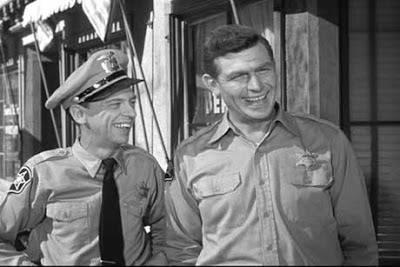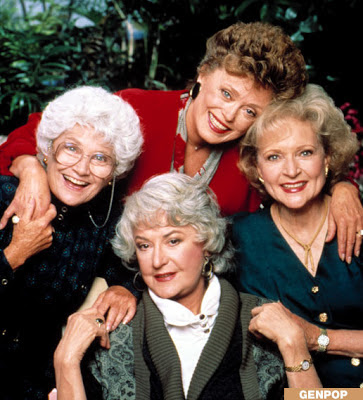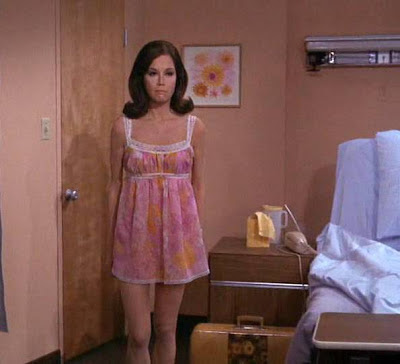Television existed in the 1940s but did not achieve mass media status until the next decade. In the 1950s the program genres and production techniques that still define the medium were established and refined, and dozens of shows were introduced that are still finding new audiences on cable and DVD.
A TV set was a big investment back then, and even once prices began dropping there were many who felt the whole concept was just a passing fad. But then came Milton Berle and Howdy Doody, Lucy Ricardo and Davy Crockett, and by the end of the decade there was a television in 9 out of every 10 American households.
Television history starts here, and these – in no particular order – are the shows you should know. For those that are not available on home video or through streaming services, there are plenty of clips on YouTube and other video sites.
The Twilight Zone
Some shows from the 1950s remain the gold standard for their genres, and The Twilight Zone is one of them. Rod Serling’s brilliant science fiction anthology series featured some of the best television writing of the decade, and can still scare the bejeezus out of viewers who grew up on Freddie and Jason.
The Goldbergs
Two years before I Love Lucy, The Goldbergs established the viability of television situation comedy, with characters that were already beloved after nearly 20 years on radio. Star Gertrude Berg (Molly Goldberg) was also the series’ producer and most prolific writer.
Texaco Star Theater
No one was responsible for the sale of more television sets than Milton Berle, aptly dubbed “Mr. Television.” Berle’s characters and skits have not aged as gracefully as many of his contemporaries, but his Tuesday night comedy-variety series was America’s first must-see TV.
Gunsmoke
Westerns thrived on television in the 1950s. In the 1958-’59 season there were 30 western series in prime time. You don’t need to sample them all but you should know Gunsmoke. It ran 20 years and more than 600 episodes, all featuring James Arness as Marshal Matt Dillon.
What’s My Line?
Several game shows aired in prime time in the 1950s, and one of the best was What’s My Line. Unlike later generations of game shows featuring screaming contestants and hosts with the subtlety of used car salesmen, this was an elegant, cultured series with a witty celebrity panel and a distinguished journalist as its host.
Dragnet
Another successful radio adaptation, Dragnet introduced viewers to the no-nonsense L.A. police detective Sgt. Joe Friday, as played by Jack Webb. The series became known for its staccato dialogue exchanges and iconic theme (the opening four notes once ranked only behind Beethoven’s Fifth in instant recognition). Friday was so admired by real cops that the real Los Angeles Police Department retired his badge number.
Howdy Doody
TV’s first kiddie show phenomenon, and one of the first series to awaken advertisers to the impact of the new medium; when Howdy and Buffalo Bob endorsed a product, sales skyrocketed. The Howdy Doody puppet is now on display at the Smithsonian.
Leave it to Beaver
A family situation comedy that defined both its era and its genre, and that introduced a character in Eddie Haskell that became synonymous with sycophantic weasels.
Your Show of Shows
A towering achievement of TV’s Golden Age, Your Show of Shows presented 90 minutes of often inspired live sketch comedy, every week, for four years. The series was fueled by genius both in front of the camera (Sid Caesar, Imogene Coca, Carl Reiner) and in the writer’s room (Mel Brooks, Neil Simon, Larry Gelbart). It also inspired The Dick Van Dyke Show and the film (and Broadway musical) My Favorite Year.
The Honeymooners
Episodes from “the classic 39” have been on television almost non-stop for more than half a century. Jackie Gleason and Art Carney were the medium’s first great comedy team, and Carney’s Ed Norton is the forefather of every wacky TV neighbor from Gladys Kravitz to Cosmo Kramer.
The Ernie Kovacs Show
Where other comedians were content to play on television, Ernie Kovacs was the only personality who would play with television, creating surreal audio and visual tricks that were decades ahead of their time.
The Original Amateur Hour
Hosted by Ted Mack, the Ryan Seacrest of the Eisenhower era, television’s first talent show aired for 22 years. It launched very few careers, but contestants included Pat Boone and a 7-year-old singer named Gladys Knight.
I Love Lucy
I trust no explanation is necessary. Laugh-out-loud moments can be found in every episode, and Desi Arnaz was an important pioneer in how situation comedies were staged and shot before a live audience.
Perry Mason
Television’s first courtroom drama set the standard for dozens of subsequent legal shows, though no TV lawyer ever had a higher winning percentage than Perry Mason. Raymond Burr’s portrayal of Mason created an idealized image of the crusading attorney that defined that profession on TV for decades.
Playhouse 90
The dramatic anthology series has disappeared, but in the 1950s there were several outstanding programs that performed movie-length dramatic scripts live every week. Start with Playhouse 90 and “Requiem for a Heavyweight,” written by Rod Serling and starring Jack Palance.
Amos & Andy
One of TV’s most controversial series, and worth a look just for the discussions it generated on racial stereotypes at a time when the South was still segregated. Amos & Andy also has a number of defenders in the African-American community, and it’s worth reading that side of the argument as well. Plus, it’s still a very funny show.
Arthur Godfrey and His Friends
Arthur Godfrey was one of Golden Age TV’s most unique personalities. His folksy charm attracted millions of viewers to both daytime and prime time series, but when he fired one of his “friends,” singer Julius LaRosa, during a live broadcast, fans saw a darker side to Godfrey and never forgave him.
The Mickey Mouse Club
In 1955, nine of the ten most-watched afternoon television shows were episodes of The Mickey Mouse Club (#10 was a World Series game). Ambitious for its time (and for now, really), the merry (and very talented) Mousketeers hosted one hour of singing, dancing, serials, news, cartoons, travelogues and guest stars. Why? Because they liked you.
The Phil Silvers Show
As inveterate gambler and con man Sgt. Ernie Bilko, Phil Silvers created one of television’s most lovable rats. Concerns over portraying a military man as a flim-flam artist dissipated after voluntary enlistments actually rose during the years the series aired.
Toast of the Town
Better known as The Ed Sullivan Show, this was the variety series that introduced The Beatles to America, and censored Elvis Presley by only shooting his performances from the waist up. All that, plus it turned an Italian mouse puppet named Topo Gigio into a household name.
The Adventures of Ozzie & Harriet
The real Nelson family – Ozzie, Harriet and sons David and Ricky – played themselves on this whimsical scripted sitcom that lasted 14 seasons, and launched Ricky into a music career that landed him in the Rock-n-Roll Hall of Fame. This series is an inspired and inventive treasure that deserves to be much better known today.
American Bandstand
Another show that probably needs no introduction. Hosted by Dick Clark, American Bandstand came of age alongside rock music and integrated its teenage audience before that was a common practice. In the 1950s, even its dancers had their own fan clubs.
The Steve Allen Show
Steve Allen was the first host of The Tonight Show, and also headlined a prime time variety series that invented many of the comedy bits still being used by David Letterman and Conan O’Brien. If you’re sampling online, start with the “Man on the Street” interviews, featuring Don Knotts, Tom Poston and Louis Nye.
The Donna Reed Show
Not a groundbreaking series, but one of the warmest, friendliest and loving family situation comedies ever created.
Extra Credit
For those seeking even more wholesome, black-and-white TV goodness, try these 1950s gems:
Father Knows Best
The George Burns and Gracie Allen Show
I Married Joan
The Many Loves of Dobie Gillis
The Jack Benny Show
Maverick
The Red Skelton Show
Our Miss Brooks
Next Week: The 1960s
Next Week: The 1960s






























































